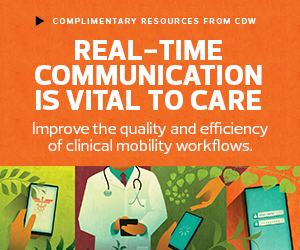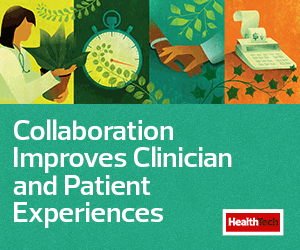Finding Value in CC&C Strategies
When healthcare organizations have a CC&C strategy that works across departments and is developed with input from both IT and clinical stakeholders, they will see success.
Northwell Health, for example, began a move to Microsoft Teams in 2019, laying the foundation for the large system that serves the New York City metro area to build out a HIPAA-compliant, seamless solution that could help with clinical decision-making and patient management. Northwell also launched an intelligent virtual assistant called Nora to complement Teams. “Our vision was to be able to get the information at your fingertips when you need it, quickly and even through voice interaction,” Northwell Health’s Deputy CIO Sophy Lu told HealthTech.
When clinicians have better access to patient information and have the tools to organize in-depth coordination, they can deliver more holistic care to patients.
“Hospitals and health systems are continuously investing in new and innovative technologies and platforms that allow for patients to access a more comprehensive view of their health and healthcare, and provide clinicians more efficient access to information at the point of care,” said Samantha Burch, director for health IT policy for the American Hospital Association.
READ MORE: Learn how communication and collaboration tools transform clinician workflows.
Achieving the Quadruple Aim With CC&C
The Quadruple Aim framework that healthcare organizations strive to achieve includes improving health outcomes, boosting patient experiences, lowering costs and enhancing clinician experiences. When clinicians can better communicate and collaborate with each other and across departments, healthcare systems move closer to reaching those ideals.
“CC&C tools absolutely have the ability to transform care delivery models and enable health systems to achieve the Quadruple Aim,” Rikki Jennings, chief nursing informatics officer at Zebra Technologies, told HealthTech.
Healthcare delivery is moving beyond hospital walls, and CC&C tools can help expand care into the community. “That is a vital piece of improving access to healthcare while also maintaining the standards of care delivery that you anticipate from within the four walls, where clinicians can connect, engage, support and collaborate with one another in real time,” Jennings said. “We absolutely anticipate that's where we will be evolving and moving in the future.”
As healthcare organizations look to bolster telehealth and at-home acute care services beyond the pandemic, strong CC&C strategies will be needed to make sure care teams are on the same page as they tend to their patients’ health.
Click the banner below to learn how a clinical mobility workshop can improve care.













